Delving into hydroponics, specifically Deep Water Culture (DWC), opens plant cultivation possibilities. DWC is a soilless technique that suspends plant roots in nutrient-rich oxygenated water. But what about the growing mediums that support these roots? From the simplicity of clay pellets to the stability of Rockwool and the natural allure of coco coir, let’s navigate through the different types of growing mediums for DWC, each offering unique benefits for optimal plant growth.
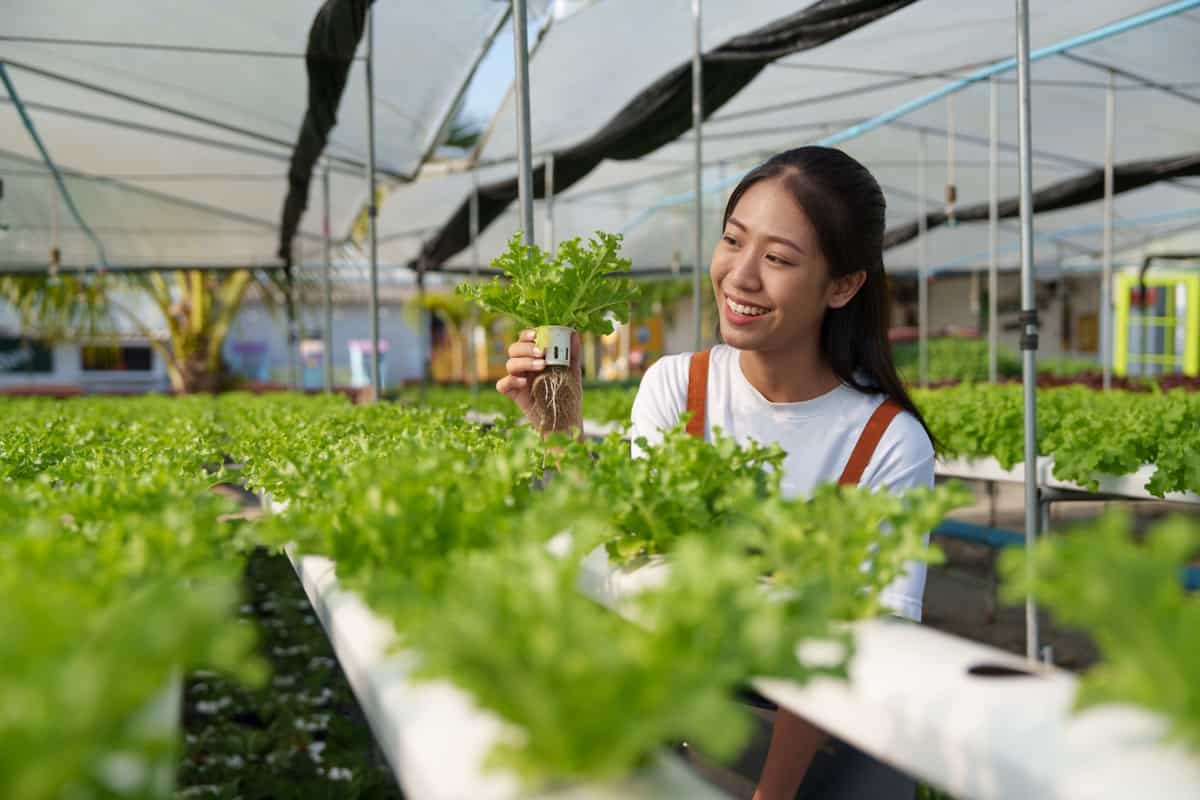
Introduction to Deep Water Culture (DWC)
Deep Water Culture is a highly effective hydroponic technique and a valuable entry point into hydroponics. This method operates: a water reservoir is infused with nutrients and air, supporting plants placed in netted pots atop the reservoir’s lid. Roots dangle in the water, absorbing nutrients.
Manual nutrient input, pH, and EC adjustments ensure a balanced environment. Submerged bubblers or air stones provide essential oxygen. Natural or from grow lights, light fosters growth, while ventilation aids cooling and stimulation.
Understanding the Importance of Growing Mediums in DWC
- Root Suspension in Oxygenated Water: DWC is a hydroponic system where plant roots are suspended in a nutrient-rich water reservoir, providing vital oxygen for growth.
- Water, Nutrients, and Oxygen: Plants require water, nutrients, and oxygen for healthy growth. In traditional soil gardening, they absorb these from the soil. In DWC, water, nutrients, and oxygen are directly supplied to the roots without soil.
- Water Supply: A reservoir with nutrient solution sits beneath plants on a floating raft. This setup ensures stable root growth in a nutrient-rich environment.
- Nutrient Efficiency: Unlike traditional gardening, where nutrients are absorbed from the soil, DWC offers a constant supply of oxygenated hydroponic nutrients for efficient root absorption.
- Oxygen Vitality: DWC maintains high oxygen levels through air pumps and stones. Other hydroponic systems expose roots to air, but DWC keeps roots submerged, infusing water with oxygen.
- Ideal for Beginners: DWC’s simplicity suits novice hobbyists. Once set up, it’s low-maintenance, making it a great entry point into hydroponics.
- Commercial Applicability: DWC is for more than just beginners. Its low-maintenance nature makes it popular in commercial gardens, yielding robust root mass growth and high nutrient uptake for significant yields.
- Minimal Components: With few components and no complex plumbing, DWC systems are easy to maintain. No expensive equipment is necessary.
- Cost-effective and Efficient: A basic DWC system can be as simple as buckets of nutrient-rich water and an air pump with a growing medium. This affordability and efficiency attract both beginners and experts.
- Continuous Growth: DWC ensures a consistent supply of nutrients and oxygen, promoting steady plant growth throughout its life cycle.
- Versatile Adaptation: DWC can be scaled for various plant types, making it adaptable to different species and growth requirements.
Types of DWC Systems
- Traditional DWC: The classic setup with a tank, net pots, air pump, and stone. It’s a beginner-friendly method that works indoors and outdoors.
- RDWC (Recirculating DWC): A more advanced version where water and nutrients circulate through connected reservoirs. Notable for scalability and enhanced nutrient distribution.
- Kratky Method: A simplified DWC approach without an air pump. Plants must have space between roots and the water surface for aeration. Electricity-free but requires practice.
- Bubbleponics: Similar to DWC but incorporates a water pump submerged in the reservoir. Water is pumped to net pots, aiding growth and root development.
- Hybrid DWC: Innovative gardeners craft unique systems, combining DWC with other techniques for custom solutions. These hybrids are less common but offer creative possibilities.
- Diverse Options: The hydroponic landscape is brimming with creativity. Seek DIY hybrid DWC ideas online for personalized approaches. Experimentation drives this ever-evolving field.
Different Types of Growing Mediums for DWC
Coco Coir as a Growing Medium in DWC
Coco coir, derived from coconut husks, is an eco-friendly DWC growing medium. It’s prepared by shredding and washing the husks to remove salts and impurities. This inert medium retains water well, promoting proper root hydration, and allows for efficient nutrient absorption.
In case you missed it: How to Make Coco Peat at Home: Process, Steps, and Guide
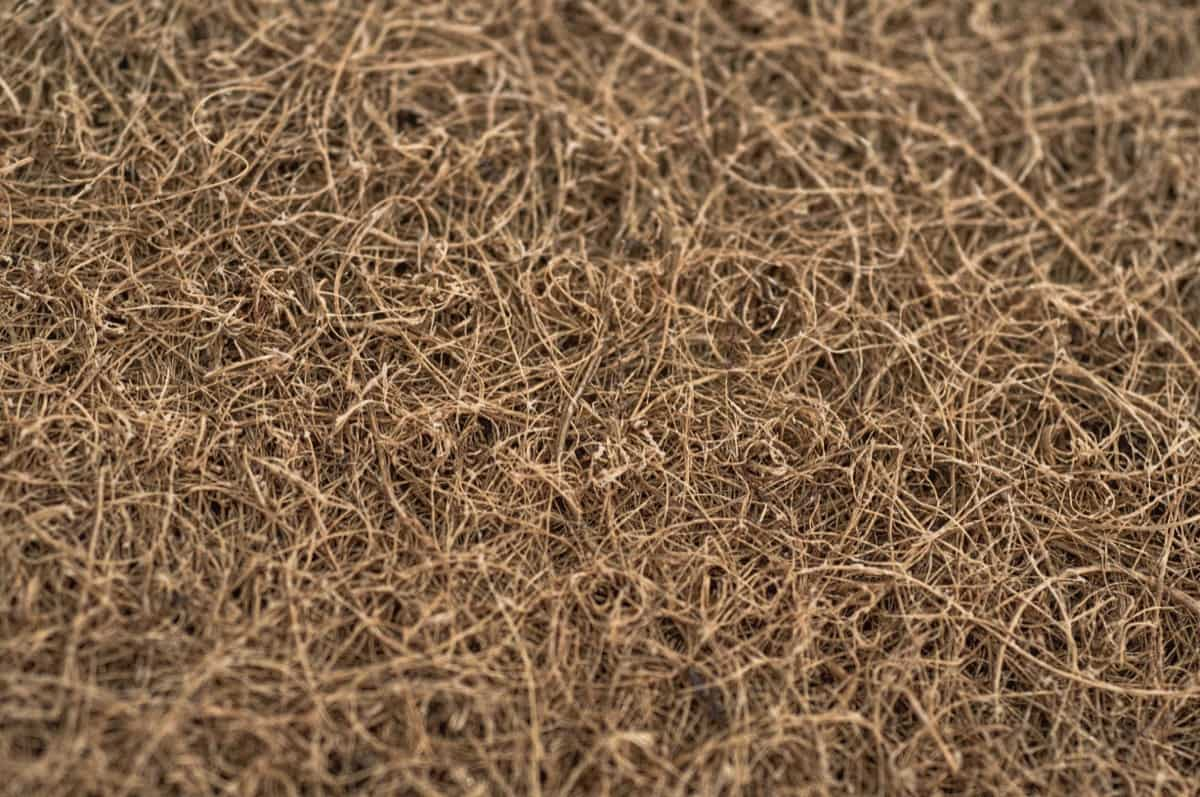
In a DWC system, net pots filled with coco coir support plants as roots access oxygen-rich water. Its porous structure prevents waterlogging while maintaining essential moisture. Coco coir’s neutral pH and sustainability make it an ideal choice for DWC, fostering healthy root growth and robust plant development in hydroponic setups.
Soilless Growing Mediums for Dwc
Soilless growing mediums in DWC hydroponics are crucial for plant roots, providing stability and support. Common mediums include Rockwool, Coco Coir, Perlite, and Clay Pellets. These mediums optimize nutrient absorption, root health, and oxygen availability, enhancing the success of DWC systems in cultivating plants without traditional soil.
Rockwool as a Growing Medium in DWC
Rockwool, a prevalent choice in DWC, is crafted from spun lava rocks. Its exceptional absorbency and inert nature make it a go-to medium. Effectively retaining nutrients and draining swiftly ensures optimal aeration, preventing waterlogging. Although easy to handle and pH-stable, Rockwool poses challenges. It can irritate the skin and lungs upon inhalation. While slightly pricey, its durability spans multiple growth cycles.
In case you missed it: Rock Phosphate in Agriculture: Fertilizer Uses, Composition, and Application for Plants
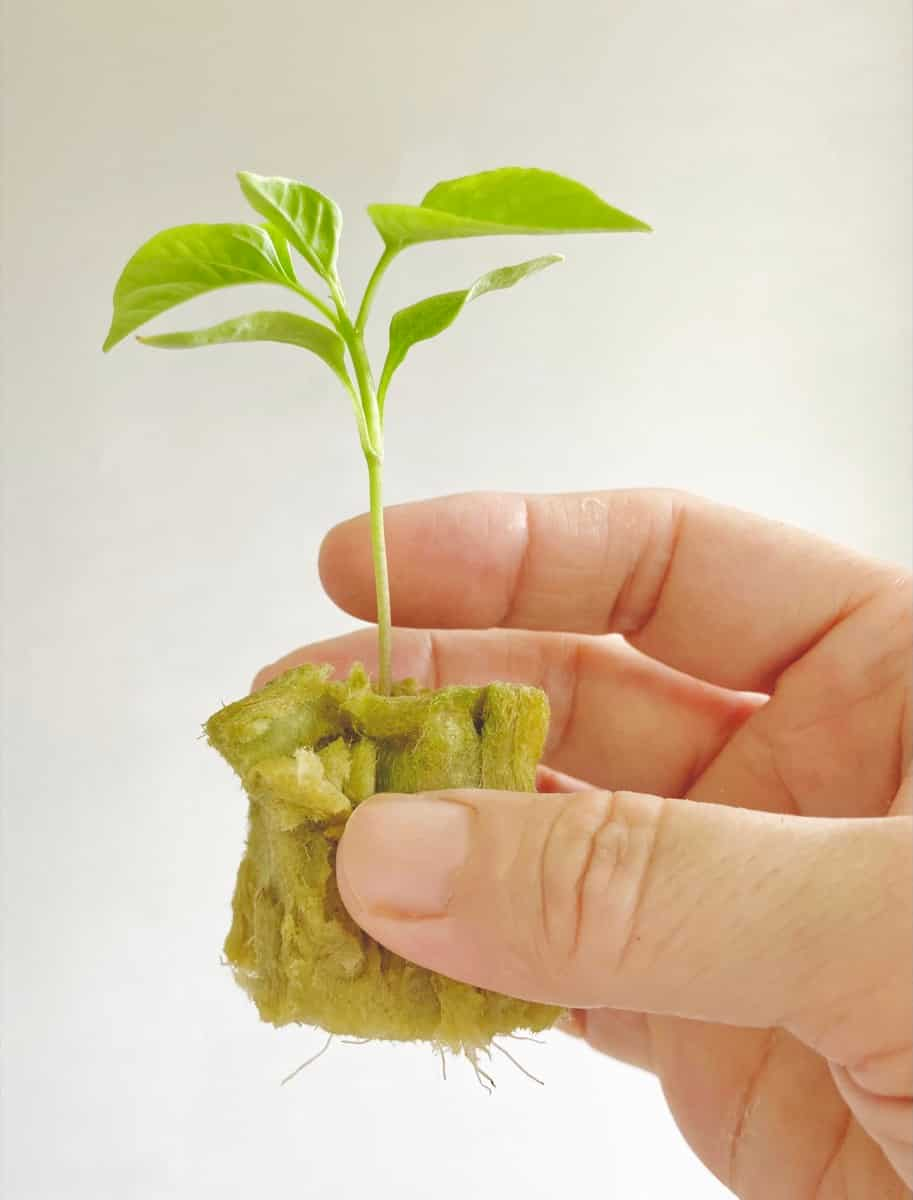
Choosing the Right Growing Medium for DWC Systems
DWC hydroponic systems offer a range of plant choices, though the list is more limited compared to advanced setups. Lettuce, microgreens, spinach, kale, and herbs like basil and parsley thrive in home-based DWC. Other options include onions, radishes, turnips, peppers, cherry tomatoes, and strawberries.
These systems can also accommodate various small houseplants. The versatility extends further, with additional possibilities depending on DWC size and type. While not exhaustive, this list highlights the variety of plants that can flourish within DWC hydroponics, making it accessible and rewarding for home growers.
Oasis Cubes as a Growing Medium in DWC
Oasis Cubes, porous foam blocks, are gaining traction as DWC hydroponic growing mediums. These cubes provide optimal water retention, ensuring consistent moisture for roots. To use them, cut holes for plant placement and immerse cubes in the nutrient-rich water. The porous structure encourages root growth while preventing waterlogging.
Oasis Cubes are pH neutral, reducing the need for pH adjustments. Their lightweight nature aids in easy handling and transplanting. These cubes offer a sterile environment, minimizing disease risk. Oasis Cubes simplifies the DWC process by promoting healthy root systems and streamlined plant care.
Expanded Clay Pebbles as a Growing Medium in DWC
Expanded clay pebbles, hydroton, or clay pellets are popular in DWC setups. They are created by heating clay to high temperatures and expanding into porous, lightweight balls. In DWC, these pebbles support plants by stabilizing roots, allowing ample oxygen and nutrient access. They prevent waterlogging, ensuring optimal aeration.
In case you missed it: How to Set Up a Nutrient Film Technique – NFT Hydroponics
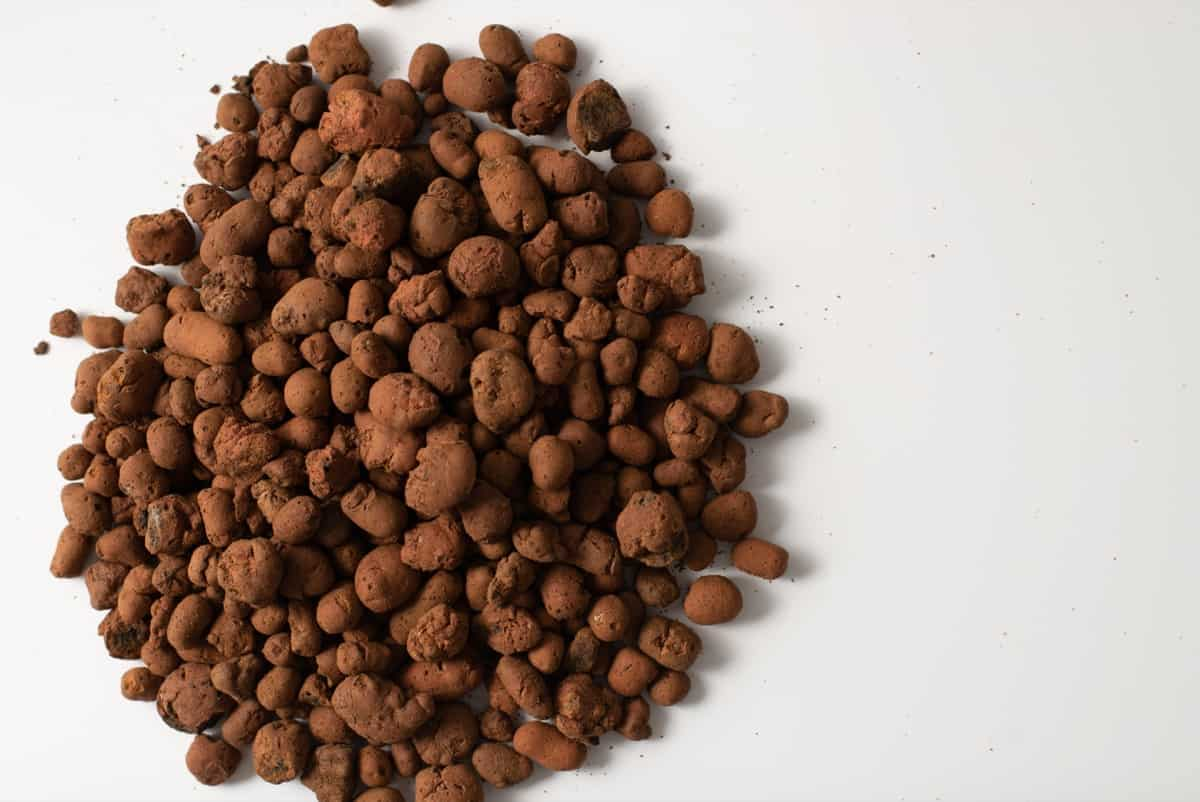
Nutrient-rich water surrounds the pebbles, delivering essential elements to plants. This medium doesn’t degrade over time, making it reusable. Expanded clay pebbles balance water retention and drainage, promoting healthy growth while maintaining a stable root environment in Deep Water Culture systems.
Vermiculite as a Growing Medium in DWC
Vermiculite serves as a potential growing medium in DWC hydroponics, albeit less common. It’s created through a heating process of naturally occurring minerals. This expansion forms lightweight, absorbent particles that can aid water retention and root anchoring. In a DWC setup, vermiculite offers stability to plants by securing their roots while allowing water and nutrients to circulate.
Its porous structure supports oxygenation, promoting healthy root growth. While less mainstream than other mediums, vermiculite’s unique attributes contribute to a balanced hydroponic environment, particularly when combined with other mediums for optimized plant cultivation.
Perlite as a Growing Medium in DWC
Perlite, a popular growing medium in DWC, is a lightweight, porous material made from volcanic glass. Its tiny, air-filled pores provide excellent aeration and drainage to plant roots. In DWC systems, perlite is used as a substrate in net pots, allowing roots to penetrate and absorb nutrients from the nutrient-rich water below.
In case you missed it: Perlite Uses in Agriculture – Application Methods, When to Use and How to Use
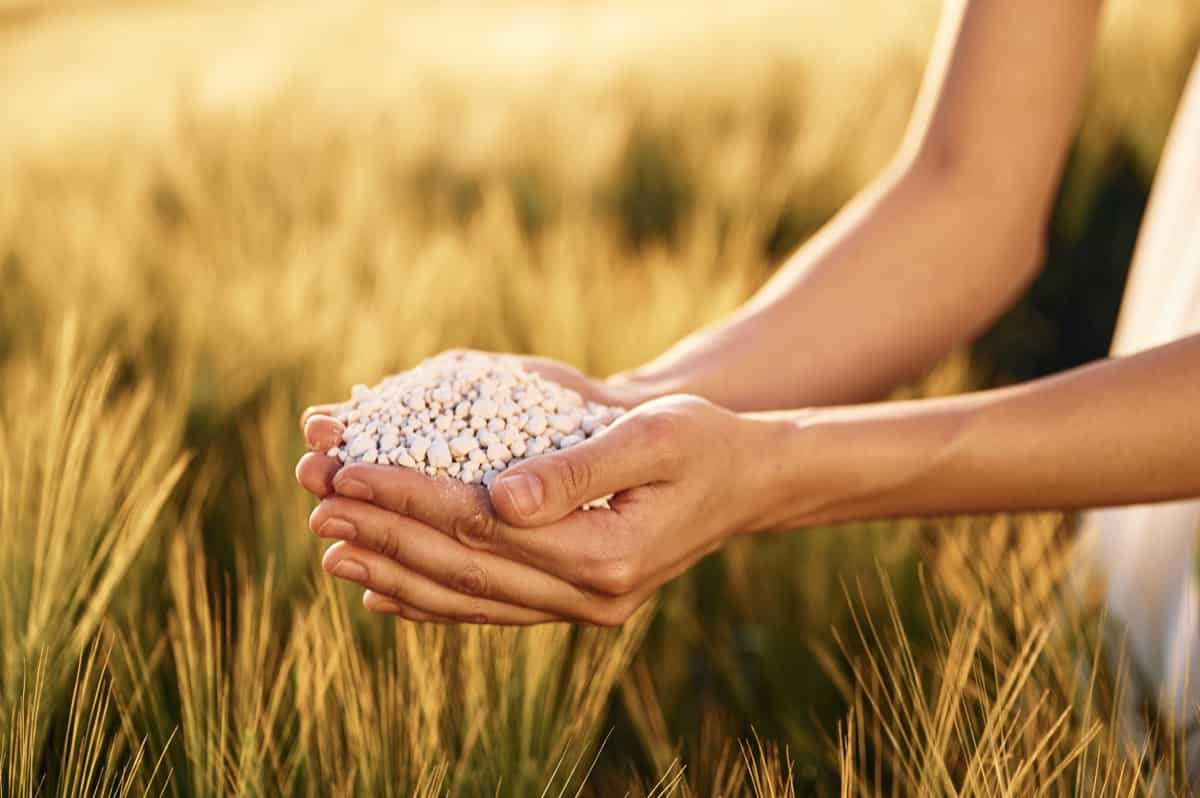
Its neutral pH and sterile nature make it ideal for hydroponic setups. Perlite’s buoyancy ensures proper oxygen levels around roots, fostering healthy growth. Its simplicity, cost-effectiveness, and ability to maintain root health render perlite a valuable addition to DWC hydroponics.
Hydroton as a Growing Medium in DWC
Hydroton, also known as expanded clay pebbles, is a popular growing medium in DWC hydroponics. Made from heated clay, these lightweight, porous balls support plant roots. In a DWC system, Hydroton offers stability and ample space for roots to spread, promoting optimal nutrient absorption. Its porous structure retains moisture while preventing waterlogging. Hydroton’s neutral pH and inert nature prevent nutrient imbalances. As water circulates, these pebbles allow air to reach the roots, enhancing the oxygen supply.
Advantages and Disadvantages of Different Growing Mediums in DWC
Advantages
- Cost-Efficient Start: Entry into DWC hydroponics is budget-friendly, requiring basic materials for setup.
- Minimal Equipment: Basic setup needs no timers, pumps, or extensive equipment.
- Medium-Free Growth: The absence of a growing medium simplifies maintenance and reduces costs.
- Multiple Plant Growth: Ability to cultivate several plants simultaneously in a compact space.
- User-Friendly: Suitable for beginners, offering less room for errors and an easier learning curve.
- Compact Design: Ideal for limited space scenarios.
- Easy Maintenance: Simple cleaning and water changes keep the system running smoothly.
Disadvantages
- Limited Scale: Smaller setup than other hydroponic systems, affecting total plant output.
- Crop Vulnerability: Risk of complete crop failure due to power outages or malfunctioning air pumps.
- Manual Monitoring: pH and EC levels need regular manual checks and adjustments.
- Maintenance Demand: Regular water changes and reservoir cleaning are necessary for sustained health.
- Output Comparison: Produces fewer plants than some other hydroponic methods.
Setting Up a Basic DWC Hydroponic System
Components Needed: A sizable container with a lid, such as a 5-gallon bucket or tote. An air pump is commonly used in fish tanks. An air stone designed for fish tanks. Net pots; you’ll need one for a bucket and up to eight for a tote. Liquid nutrients to feed your plants. A hydroponic pH kit comprising test strips or a meter. Optionally, a growing medium like pebbles, gravel, rockwool, or clay pellets. Optionally, a submersible water pump if you’re using the bubbleponics technique.
Assembly: Trace and cut holes in the container’s lid to accommodate net pots. Insert the net pots into these holes. Fill the container with water, creating a reservoir. Introduce the liquid nutrients and adjust water temperature and pH levels. Attach the air stone to the pump and submerge it in the reservoir. Place the lid with the net pots onto the container. If you’re using a growing medium, add it now. Insert your chosen plants into the net pots.
Maintenance: Change the water and clean the reservoir every two weeks. Utilize a hydroponic-friendly cleaning solution, avoiding harsh chemicals. Regularly clean the air stone or filter to ensure proper aeration. Keep an eye on water and nutrient levels, topping them off as necessary.
Costs: Setup expenses for DIY or pre-made systems range from $100 to over $1,000. Larger pre-made systems might exceed $5,000 in cost. Monthly upkeep, covering electricity, cleaning supplies, replacement parts, and nutrients, averages between $50 and $150.
Factors to Consider When Selecting a Growing Medium for DWC
Several factors play a crucial role when selecting a growing medium for Deep Water Culture (DWC). First, assess water retention and aeration capabilities to support root health. pH stability and nutrient retention are vital for proper plant growth. Consider the medium’s ease of use and potential for clogging. Eco-friendliness, cost, and reusability contribute to sustainability. Compatibility with your chosen plant type is essential for optimal results. Lastly, evaluate the overall maintenance requirements and your familiarity with the medium.
Tips for Properly Using and Maintaining Different Growing Mediums in DWC
- Water Quantity: The water level in DWC setups should maintain a range of 3/4 to 1 inch below net pot bottoms, varying based on reservoir size. A 5-gallon container might need around 4.5 gallons of water, while a 20-gallon one might need about 19 gallons.
- Nutrient Requirements: Essential nutrients for DWC include nitrogen, phosphorus, potassium, magnesium, calcium, sulfur, iron, boron, chloride, copper, manganese, molybdenum, and zinc.
- Best Growing Medium: While not mandatory, some optimal DWC growing mediums are clay pellets, perlite, lava rocks, and rockwool.
- Yield and Growth Enhancement: DWC systems, like other hydroponics, can increase yields by up to 30% and accelerate plant growth by 50 to 60% compared to traditional methods.
- Grow Lights: Grow lights are essential for indoor DWC systems. Outdoors, sunlight is sufficient.
- Water Changing Frequency: Hydroponic water typically requires changing every 10 to 15 days, adjusting for contamination or pH/EC issues.
- Nutrient Solution Temperature: DWC nutrient solutions should stay within 65℉ to 80℉ to prevent root issues and promote optimal growth.
- Water Temperature Control: Maintain water levels, enhance aeration, shield the reservoir from light, use additives for cooling, install cooling coils, or even bury the reservoir to manage water temperature.
- Root Position Above Water: Roots should be around 1 inch to 1.5 inches above water in DWC systems, allowing air access and mitigating root rot risks.
- DWC and Aquaponics: DWC and aquaponics complement each other, with historical use dating back to ancient cultures. DWC aquaponics substitutes the reservoir with a fish tank for a symbiotic relationship.
- RDWC vs. DWC: The choice between RDWC and DWC depends on scale and context; DWC suits small indoor setups, while RDWC excels in larger outdoor cultivation.
- DWC Drainage: DWC setups are generally self-contained or recirculating rather than drain-to-waste, but customization can enable the latter.
Hydroponic Runoff Utilization: Hydroponic runoff can be employed to water plants outside the system, mixed with fresh water for reuse, or disposed of properly.
- Algae Growth: Reduce light exposure and maintain cleanliness.
- Fluctuating Water Temperatures: Shade the reservoir and keep it topped off.
- Unstable pH Levels: Regularly monitor, test, and adjust pH levels while changing water consistently.
In case you missed it: Best Plants to Grow Under Grow Lights in Hydroponics: For Flowers, Herbs, Vegetables, and Fruits
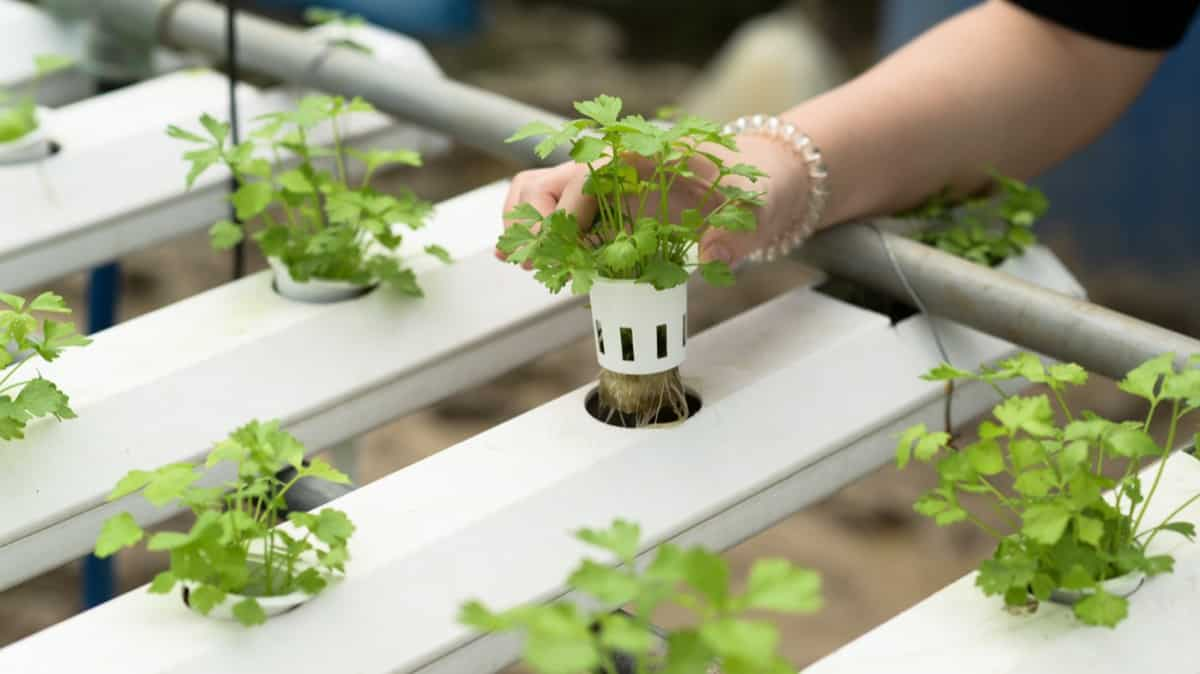
Conclusion
Deep Water Culture (DWC), a variety of growing mediums, provides diverse options. Each medium offers unique benefits and drawbacks, from the absorbent Rockwool to the inert Hydroton and beyond. The choice hinges on factors like aeration, water retention, and plant preference, enabling tailored hydroponic cultivation.
- Types of Pesticides Used in Agriculture: A Beginner’s Guide
- Economical Aquaculture: A Guide to Low-Budget Fish Farming
- 15 Common Planting Errors That Can Doom Your Fruit Trees
- How to Make Houseplants Bushy: Effective Tips and Ideas
- Innovative Strategies for Boosting Coconut Pollination and Yield
- Pollination Strategies for Maximum Pumpkin Yield
- The Complete Guide to Chicken Fattening: Strategies for Maximum Growth
- Natural Solutions for Tulip Problems: 100% Effective Remedies for Leaf and Bulb-Related Issues
- Revolutionizing Citrus Preservation: Towards a Healthier, Greener Future
- Natural Solutions for Peony Leaf and Flower Problems: 100% Effective Remedies
- Maximizing Profits with Avocado Contract Farming in India: A Comprehensive Guide
- Natural Solutions for Hydrangea Problems: 100% Effective Remedies for Leaf and Flowers
- The Ultimate Guide to Choosing the Perfect Foliage Friend: Bringing Life Indoors
- From Sunlight to Sustainability: 15 Ways to Use Solar Technology in Agriculture
- The Ultimate Guide to Dong Tao Chicken: Exploring from History to Raising
- The Eco-Friendly Makeover: How to Convert Your Unused Swimming Pool into a Fish Pond
- Mastering the Art of Delaware Chicken Farming: Essentials for Healthy Backyard Flocks
- 20 Best Homemade Fertilizers for Money Plant: DIY Recipes and Application Methods
- How to Craft a Comprehensive Free-Range Chicken Farming Business Plan
- Brighten Your Flock: Raising Easter Egger Chickens for Beauty and Bounty
- How to Optimize Your Poultry Egg Farm Business Plan with These Strategies
- Subsidy for Spirulina Cultivation: How Indian Government Schemes Encouraging Spirulina Farmers
- Ultimate Guide to Raising Dominique Chickens: Breeding, Feeding, Egg-Production, and Care
- Mastering the Art of Raising Jersey Giant Chickens: Care, Feeding, and More
- Ultimate Guide to Raising Legbar Chickens: Breeding, Farming Practices, Diet, Egg-Production
- How to Raise Welsummer Chickens: A Comprehensive Guide for Beginners
- How to Protect Indoor Plants in Winter: A Comprehensive Guide
- Ultimate Guide to Grow Bag Gardening: Tips, Tricks, and Planting Ideas for Urban Gardeners
- Guide to Lotus Cultivation: How to Propagate, Plant, Grow, Care, Cost, and Profit
- Agriculture Drone Subsidy Scheme: Government Kisan Subsidy, License, and How to Apply Online
- Ultimate Guide to Raising Araucana Chickens: Breed Profile, Farming Economics, Diet, and Care
- Bringing Hydroponics to Classroom: Importance, Benefits of Learning for School Students
- Ultimate Guide to Raising Polish Chickens: Breed Profile, Farming Economics, Diet, and Care
- Ultimate Guide to Raising Australorp Chickens: Profile, Farming Economics, Egg Production, Diet, and Care
- Silkie Chicken Farming: Raising Practices, Varieties, Egg Production, Diet, and Care
- Sussex Chicken Farming: Raising Practices, Varieties, Egg Production, Diet and Care